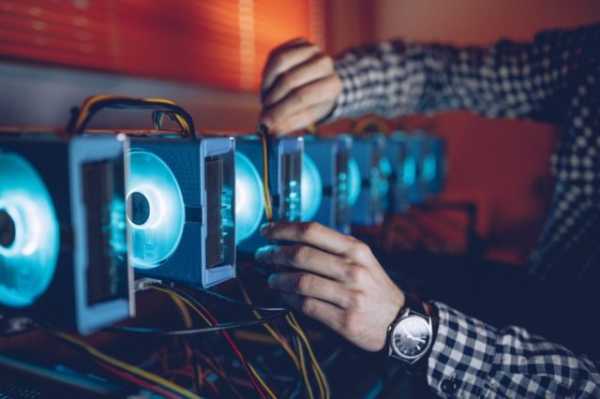Pakistan's Bold Move to Mining Bitcoin to Use Excess Energy

At the BTC 2025 conference in Las Vegas, Pakistan unveiled an ambitious plan to allocate 2,000 megawatts (MW) of excess electricity to support Bitcoin mining and artificial intelligence (AI) data centers, marking a major step toward digital finance and technological innovation. The strategic initiative, spearheaded by the Pakistan Crypto Council (PCC) and supported by Finance Minister Muhammad Aurangzeb and Special Assistant to the Prime Minister on Blockchain and Crypto Bilal bin Saqib, places Pakistan among possible global hubs for digital currency and high-tech. By leveraging its excess energy resources, the country aims to turn a long-standing economic burden into an opportunity for revenue while addressing complex domestic and international issues.
Pakistan’s energy sector has long faced a paradox: despite significant investments in energy infrastructure, the country suffers from high electricity tariffs and underutilized capacity, especially coal-fired power plants that operate at only 15% of their capacity. This surplus, which is estimated to be enough to power two major cities, has become a financial burden due to declining industrial activity and distribution inefficiencies. The government’s decision to redirect this idle energy to Bitcoin and AI data centers is a smart move to monetize this resource. Bitcoin Mining researcher Daniel Batten estimates that the 2,000 MW allocated could generate up to 17,000 BTC per year, which is equivalent to approximately $1.8 billion at current prices. Not only does this initiative promise economic benefits, it also aims to stabilize the electricity grid by using excess power during off-peak hours.
The announcement follows the legalization of digital currency in Pakistan earlier this year, which piqued the interest of international bitcoin miners and data companies. The establishment of the Pakistan Digital Assets Authority (PDAA) reiterates the government’s commitment to creating a regulated and investor-friendly environment for digital finance. The PDAA aims to protect investors, empower developers, and create a secure framework for blockchain-based activities, covering an estimated 15-20 million digital currency users in Pakistan and a market valued at $25 billion. The government has also introduced tax incentives for AI data centers and duty exemptions for bitcoin mining equipment, signaling a proactive approach to attracting foreign investment.
Saqib, who is also the CEO of PCC, noted that the initiative is not about speculative trading but about creating a “sovereign reserve” of BTC to demonstrate Pakistan’s long-term commitment to decentralized finance (DeFi). At BTC Vegas 2025, Saqib announced the launch of a national Bitcoin wallet to store digital assets already in government custody, taking inspiration from the new US plan to create a strategic Bitcoin reserve. “We will hold these bitcoins and never, ever sell them,” Saqib said, describing the reserve as a hedge against economic instability and a step toward digital transformation.
However, the plan has attracted attention both domestically and internationally. The International Monetary Fund (IMF), which is leading financial negotiations with Pakistan, has expressed concern about the allocation of 2,000 megawatts of power for Bitcoin mining amid ongoing energy shortages in some regions. Critics have questioned the priority given to subsidized electricity rates for miners, which are significantly lower than those paid by households and industry, calling the move “unclear and opaque.” Economists have also highlighted BTC’s volatility, pointing out that while its price has risen above $110,000, its historical fluctuations pose risks to the government’s strategy of accumulating digital assets as a reserve.
Domestically, the initiative clashes with the current legal position that digital currency remains banned for individual use. This contradiction raises questions about the government’s ability to reconcile its global ambitions with local regulations. The creation of the PDAA is a step toward regulatory clarity, but the path forward remains challenging, especially given that Pakistan must manage a fragile economy that has narrowly avoided default in 2023. A recent 45% decline in foreign direct investment and ongoing negotiations with the IMF are increasing pressure on the government to ensure that the BTC mining strategy leads to tangible economic results.
Pakistan’s digital infrastructure has received a boost from the Africa-2 Cable Project, a 45,000-kilometer-long undersea internet cable connecting 33 countries, increasing the country’s appeal as a data center hub. Geographically positioned to connect Asia, Europe, and the Middle East, Pakistan offers competitive advantages over regional rivals like India and Singapore, especially in terms of stable and affordable electricity prices. Global demand for AI data centers, which exceeds current supply, further positions Pakistan to seize this opportunity.
The move puts Pakistan in line with a growing number of countries, including Kazakhstan, Japan, Malaysia and Bhutan, that have legalized bitcoin mining to bolster their economies. Following in the footsteps of these countries and taking inspiration from the United States, Pakistan is betting on the transformative potential of blockchain technology and digital assets. However, the success of the initiative depends on the government’s ability to address challenges
Source: cryptonews.net



